Improving Data Quality Through Smart Classification Strategies
High-quality data serves as the backbone of successful businesses. When your data lacks accuracy, completeness, or consistency, it can lead to costly mistakes and missed opportunities. For instance, poor data quality costs organizations an average of $15 million annually, impacting revenue and operational efficiency. Dirty data, such as duplication or missing values, complicates analysis and leads to flawed decisions. By adopting effective Data Classification Strategies, you can proactively manage and categorize data, ensuring it remains clean and reliable. This approach highlights the importance of data cleaning and safeguards your business from financial and reputational risks.
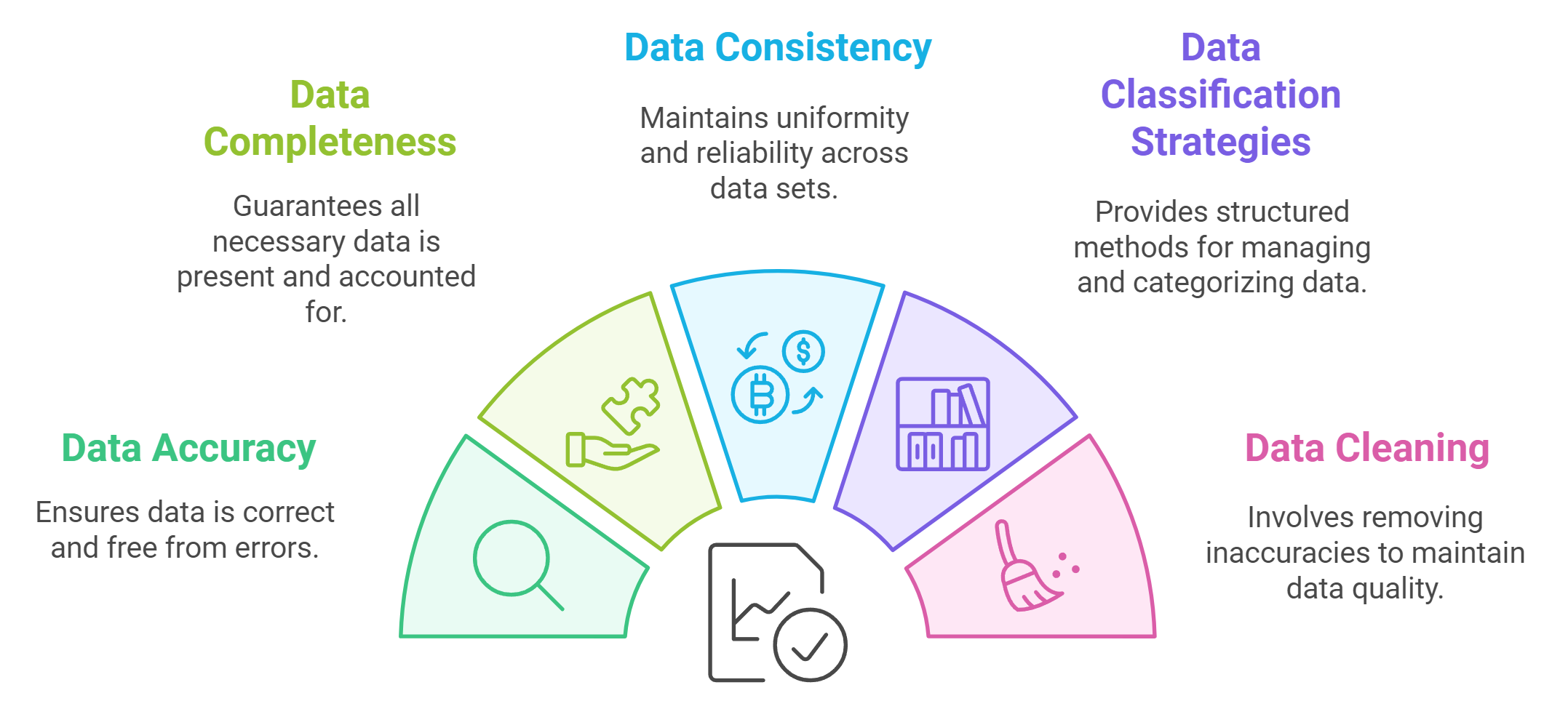
Key Takeaways
High-quality data is essential for business success; poor data quality can cost organizations an average of $15 million annually.
Implementing effective data classification strategies helps organize and manage data, reducing errors like duplication and missing values.
Regularly review and update your data classification policies to ensure they remain relevant and effective as your business evolves.
Leverage automation and AI tools to enhance data classification efficiency, detect errors in real-time, and maintain high-quality data.
Establish clear classification categories (e.g., 'confidential,' 'restricted') to prioritize data protection and resource allocation.
Training your team on data entry standards minimizes errors and strengthens your classification efforts.
Adopting smart classification strategies not only improves data quality but also enhances customer satisfaction and operational efficiency.
Understanding Data Classification Strategies and Their Impact on Data Quality
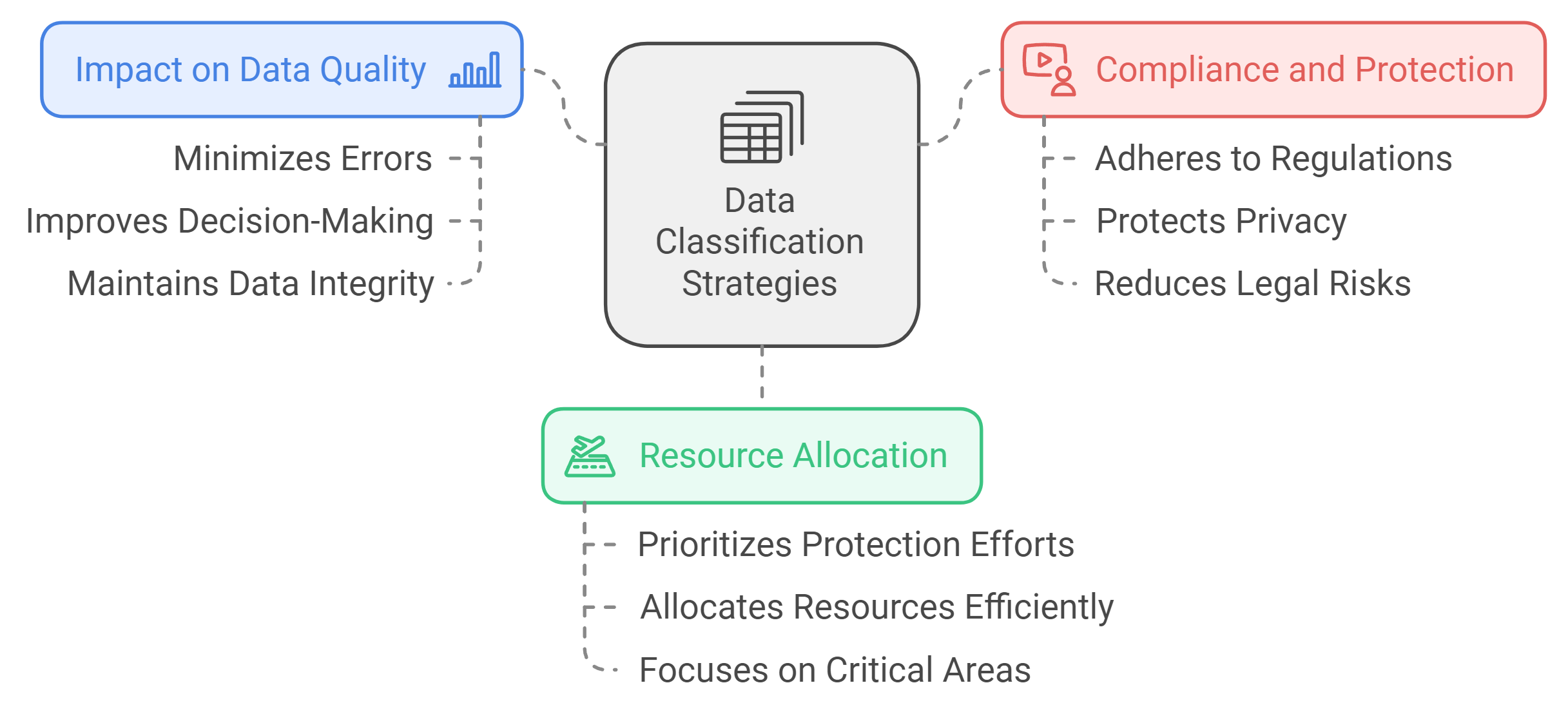
What Are Data Classification Strategies?
Data classification strategies involve organizing and categorizing data based on its sensitivity, value, and purpose. These strategies help you manage data effectively by assigning labels or categories that reflect its importance. For example, sensitive data like customer information or financial records may require stricter controls compared to general business data. By implementing these strategies, you can ensure that critical data receives the protection it needs while maintaining accessibility for authorized users.
"Data classification helps prioritize protection efforts, allocate resources efficiently, and ensure compliance with laws and standards."
This process not only safeguards sensitive information but also supports compliance with regulations such as GDPR or HIPAA. When you classify data properly, you reduce risks associated with data breaches and legal penalties. Additionally, it allows you to allocate resources more efficiently, focusing on areas that require the most attention.
The Link Between Data Classification and Data Quality
Data classification directly impacts data quality by ensuring that information is organized and managed systematically. When you categorize data accurately, you minimize errors like duplication, inconsistency, or missing values. This structured approach makes it easier to maintain clean and reliable datasets.
High-quality data enables better decision-making and operational efficiency. For instance, when your data is well-classified, you can quickly identify and retrieve relevant information. This reduces the time spent searching for data and improves productivity. Moreover, classification strategies help you detect and address potential issues before they escalate, ensuring long-term data integrity.
Ethically, data classification plays a vital role in protecting individuals' privacy and rights. By safeguarding sensitive data, you uphold ethical standards and demonstrate a commitment to responsible data management. This not only builds trust with customers but also strengthens your organization's reputation.
Addressing Common Data Quality Issues with Classification Strategies
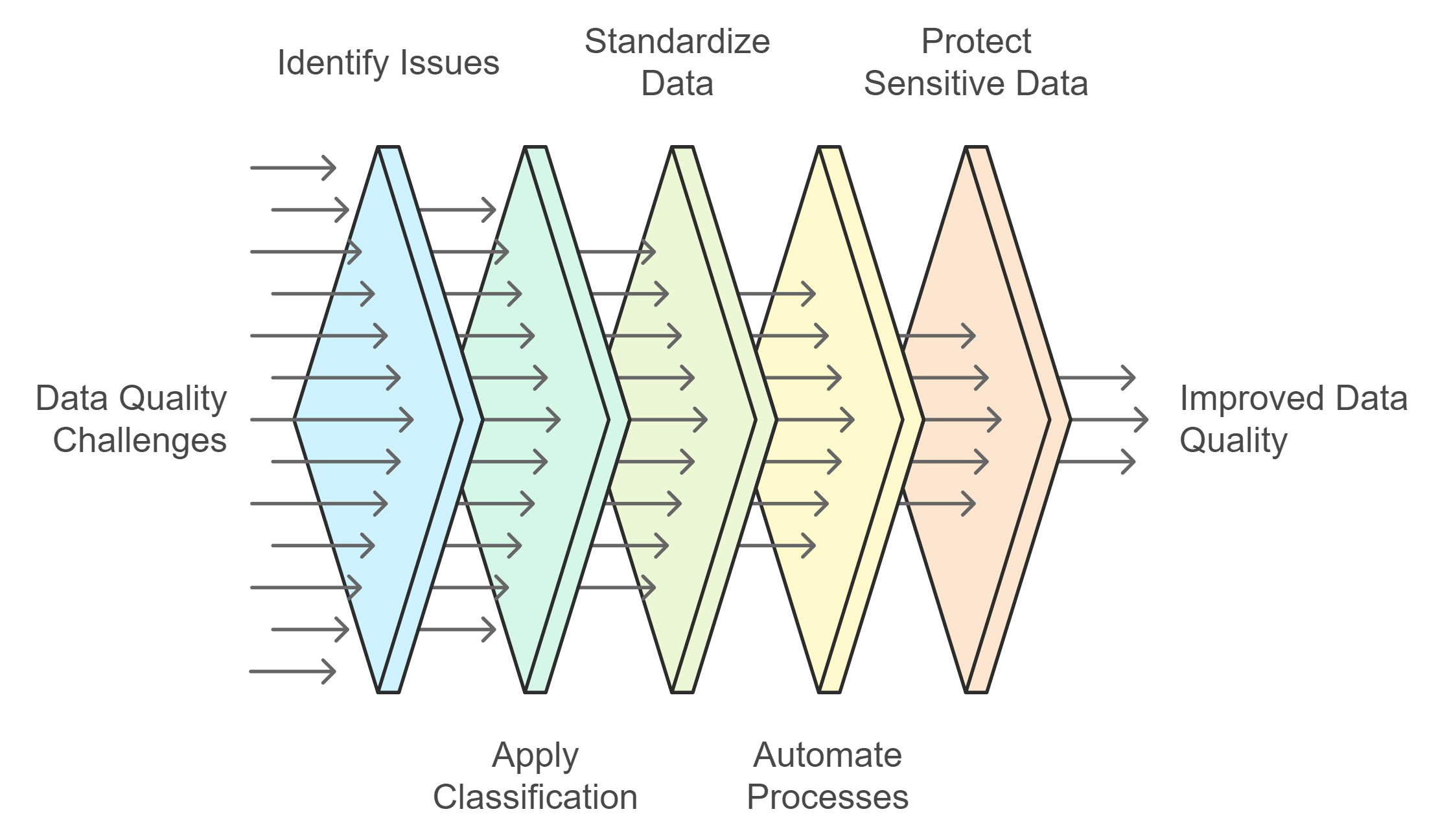
Common Data Quality Challenges
Data quality issues can disrupt your operations and decision-making processes. These challenges often stem from errors like duplication, missing values, or inconsistent formats. For example, duplicate customer records can lead to inaccurate reporting and wasted marketing efforts. Missing values in datasets may result in incomplete analyses, while inconsistent formats make it difficult to integrate data from multiple sources.
Another common issue is the lack of standardization. Without clear guidelines, data entry becomes prone to human error. This inconsistency can create confusion and reduce the reliability of your datasets. Additionally, as businesses grow, the volume of data increases, making it harder to maintain accuracy and consistency.
Poor data quality also affects customer experience. For instance, an e-commerce platform with disorganized product data may frustrate customers trying to find specific items. This can lead to lost sales and damage your brand reputation. Addressing these challenges is essential for maintaining operational efficiency and customer satisfaction.
How Data Classification Strategies Resolve These Issues
Data Classification Strategies provide a structured approach to tackling these challenges. By categorizing data based on its sensitivity, purpose, or value, you can ensure better organization and management. This reduces the likelihood of errors like duplication or missing values. For instance, when you classify customer data into categories such as "active," "inactive," or "prospective," it becomes easier to identify and remove duplicates.
Standardization plays a key role in resolving data quality issues. Classification strategies often include rules for consistent data entry, ensuring uniformity across datasets. This minimizes errors and simplifies data integration. For example, an e-commerce platform that implemented a classification system for product data saw a 40% increase in sales. The streamlined navigation allowed customers to find products more easily, enhancing their shopping experience.
Automation further enhances the effectiveness of classification strategies. Tools powered by artificial intelligence can automatically detect and correct inconsistencies, saving time and effort. These tools can also flag potential issues, enabling you to address them before they escalate. By leveraging automation, you can maintain high-quality data even as your business scales.
In addition to improving operational efficiency, classification strategies protect sensitive information. Categorizing data based on sensitivity ensures that critical information receives the necessary safeguards. This not only reduces the risk of data breaches but also helps you comply with regulations like GDPR or HIPAA.
"A structured approach to data classification can significantly reduce the risk of dirty data by ensuring that data is accurately categorized and managed."
By adopting these strategies, you can transform your data management practices. Clean, well-organized data supports better decision-making, enhances customer satisfaction, and strengthens your competitive edge.
Implementing Smart Data Classification Strategies to Prevent Dirty Data
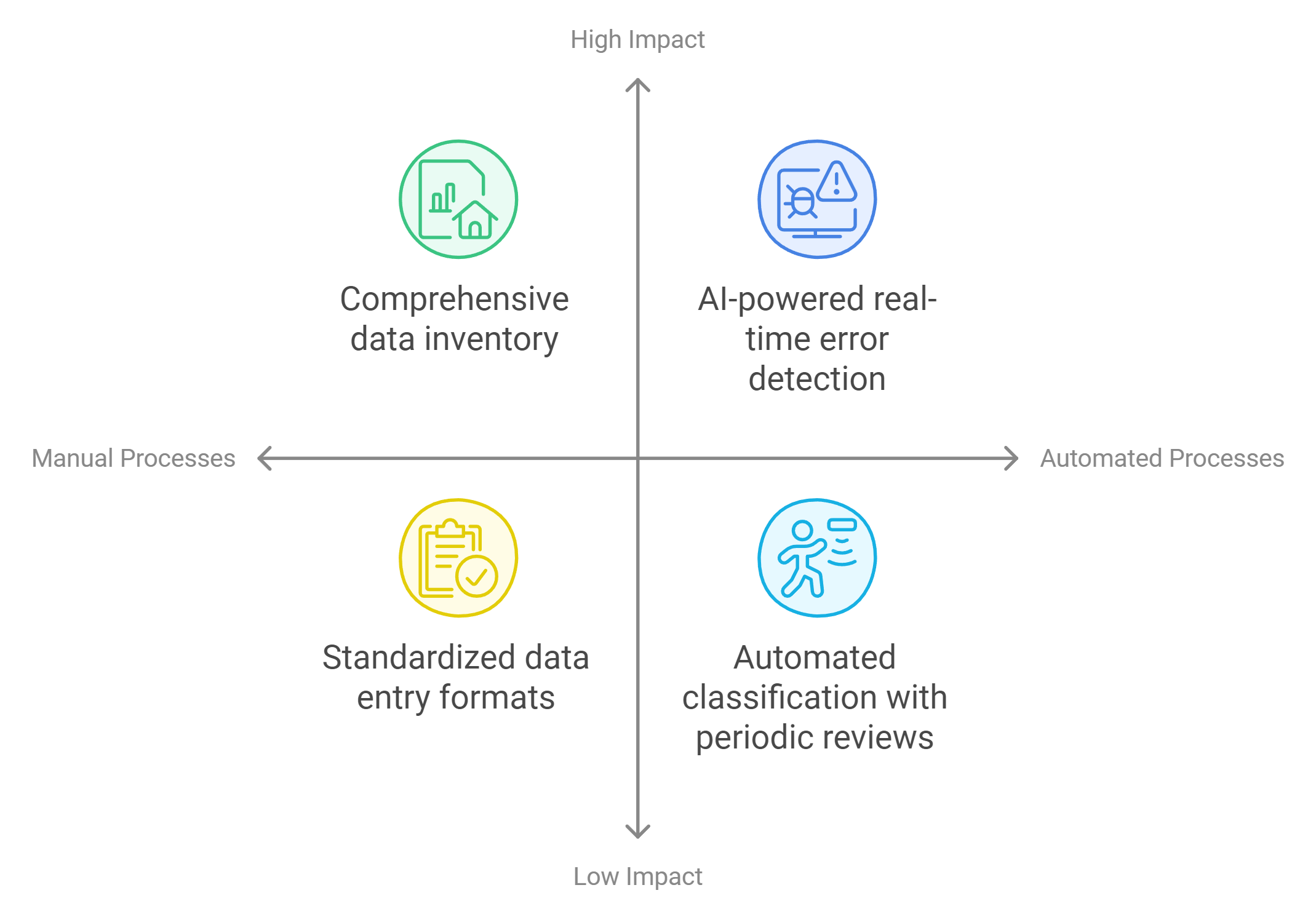
Best Practices for Effective Data Classification
To implement effective data classification strategies, you must follow a structured approach. Start by conducting a comprehensive data inventory. Identify all the data your organization handles, including customer information, financial records, and operational data. This step ensures you understand the scope of your data and its varying levels of sensitivity.
Next, establish clear classification categories. For example, you can classify data as "confidential," "restricted," or "public." These categories help you prioritize protection efforts and allocate resources efficiently. Businesses using such policies often experience enhanced data security and better resource management compared to those without them.
Standardization is another critical practice. Define consistent rules for data entry and management. This minimizes errors and ensures uniformity across datasets. For instance, standardizing formats for customer names or addresses reduces duplication and inconsistencies. Training your team on these standards further strengthens your classification efforts.
Regularly review and update your classification policies. As your business evolves, so does your data. Periodic assessments ensure your strategies remain relevant and effective. By adopting these best practices, you can maintain high-quality data and prevent dirty data from disrupting your operations.
Leveraging Automation and AI for Smarter Classification
Automation and AI revolutionize data classification by enhancing efficiency and accuracy. Automated tools can analyze vast amounts of data, identify patterns, and assign appropriate classifications. This eliminates the subjectivity and inconsistencies often associated with manual classification.
AI-powered systems continuously update classifications as new data enters your system. For example, an e-commerce platform using automated classification can instantly categorize new products based on their descriptions. This streamlines operations and improves inventory tracking. Businesses leveraging automation often report smoother workflows and reduced labor costs compared to those relying on manual processes.
Automation also helps detect and correct errors in real time. AI tools can flag anomalies, such as duplicate entries or missing values, allowing you to address issues promptly. This proactive approach ensures your data remains clean and reliable.
By integrating automation into your data classification strategies, you not only save time but also enhance the overall quality of your data. This technological edge positions your business for smarter decision-making and long-term success.
Real-World Examples of Successful Data Classification Strategies
Many organizations have achieved remarkable results by implementing smart data classification strategies. For instance, a financial institution categorized its customer data into "active," "inactive," and "prospective" segments. This approach reduced duplication and improved the accuracy of marketing campaigns, leading to a significant increase in customer engagement.
Another example comes from the retail sector. An online retailer adopted an automated classification system for its product data. This system standardized product descriptions and categories, making it easier for customers to find items. The result? A 40% boost in sales and enhanced customer satisfaction.
Healthcare organizations also benefit from effective data classification. By categorizing patient records based on sensitivity, they ensure compliance with regulations like HIPAA. This not only protects patient privacy but also builds trust with stakeholders.
These examples highlight the transformative impact of data classification strategies. When you adopt similar approaches, you can improve data quality, streamline operations, and achieve measurable business outcomes.
Tools and Technologies for Supporting Data Classification Strategies
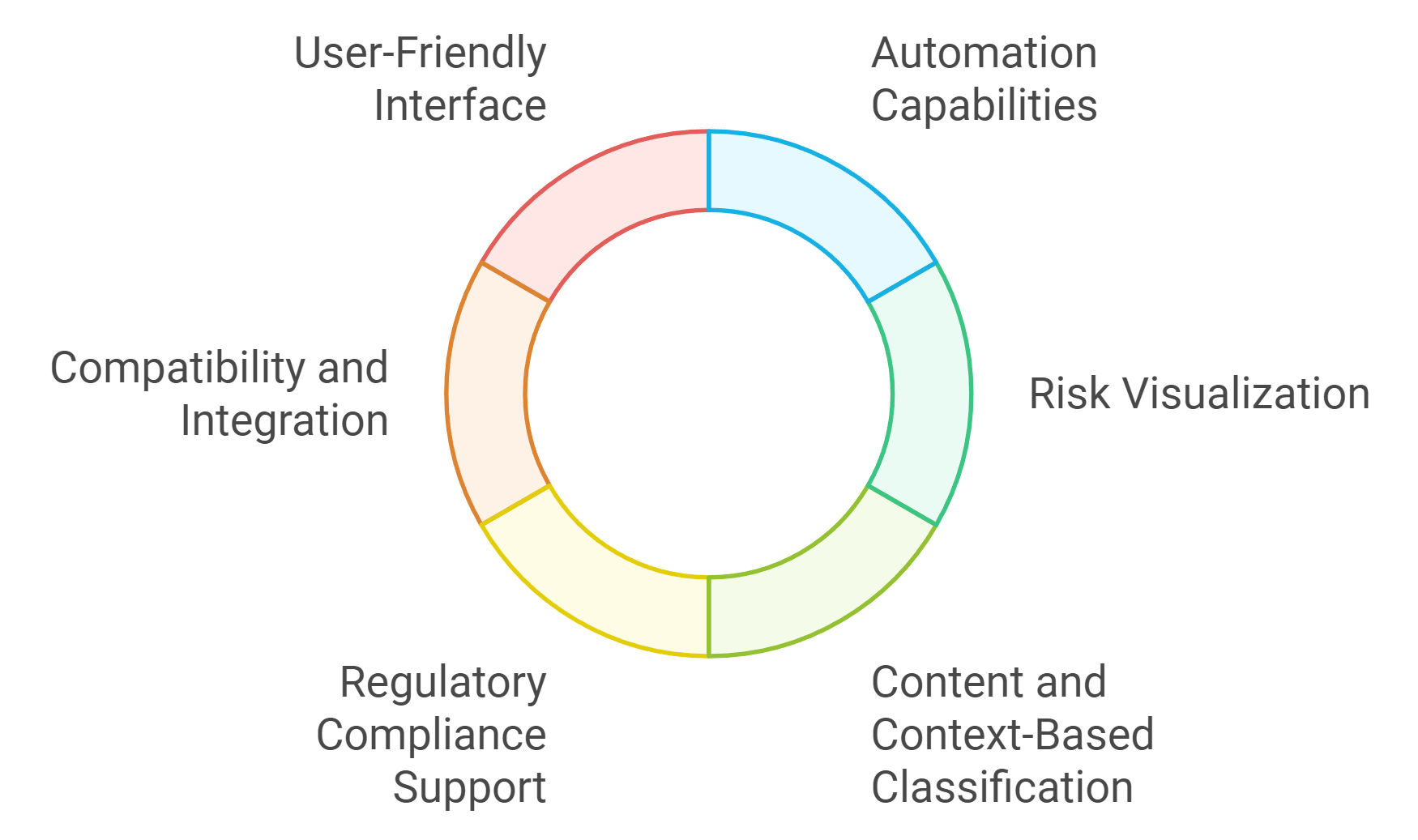
Features of Effective Data Classification Tools
Effective data classification tools play a crucial role in maintaining high-quality data. These tools simplify the process of identifying, categorizing, and securing your data. To choose the right tool, you should look for specific features that enhance functionality and usability.
Automation Capabilities: Automation reduces manual effort and ensures consistency. Tools like the Varonis Data Classification Engine use automated classification to detect sensitive data, such as Personally Identifiable Information (PII) and Protected Health Information (PHI). This feature saves time and minimizes human error.
Risk Visualization: Understanding vulnerabilities is essential for data protection. The Varonis platform provides risk visualization, offering a clear picture of where your data is most exposed. This helps you prioritize areas that need immediate attention.
Content and Context-Based Classification: Tools like Netwrix Data Collection combine content and context-based methods to classify a wide range of data types. This dual approach ensures accurate categorization, making it easier to manage and secure your data.
Regulatory Compliance Support: Many organizations must comply with regulations like GDPR, HIPAA, or PCI DSS. A good classification tool anticipates regulatory needs and simplifies audits. For instance, effective tools align with data privacy laws, ensuring compliance while protecting sensitive information.
Compatibility and Integration: Tools with widespread compatibility integrate seamlessly into existing systems. The Varonis Universal Database Connector, for example, tracks and classifies data across multiple silos, ensuring smooth operations without disrupting workflows.
User-Friendly Interface: A simple and intuitive interface enhances usability. Tools that allow both automated and manual classification, like Netwrix Data Collection, empower users to organize data efficiently while maintaining control.
By selecting tools with these features, you can streamline your data classification efforts and maintain a robust data management strategy.
Integrating Classification Tools into Existing Systems
Integrating data classification tools into your current systems requires careful planning. A seamless integration ensures that your workflows remain efficient while enhancing data quality and security.
Assess Your Existing Infrastructure: Start by evaluating your current systems and data management practices. Identify gaps where classification tools can add value. For example, if your organization struggles with inconsistent data formats, tools with standardization features can address this issue effectively.
Choose Compatible Tools: Compatibility is key to successful integration. Tools like the Varonis Data Classification Engine offer widespread compatibility, allowing you to track and secure data across multiple platforms. This ensures that your systems work together without conflicts.
Implement Gradually: Introducing new tools in phases minimizes disruptions. Begin with a pilot program to test the tool's effectiveness. Gradual implementation allows your team to adapt and provides an opportunity to address any challenges early.
Train Your Team: Proper training ensures that your team understands how to use the tools effectively. Highlight features like automation and risk visualization to demonstrate their benefits. Training also reduces errors and maximizes the tool's potential.
Monitor and Update Regularly: After integration, continuously monitor the tool's performance. Regular updates keep the system aligned with evolving business needs and regulatory requirements. Tools like Netwrix Data Collection offer automatic updates, ensuring that your classification strategies remain effective over time.
By following these steps, you can integrate data classification tools smoothly into your systems. This not only enhances data quality but also strengthens your organization's overall data management capabilities.
Improving data quality through smart classification strategies offers significant benefits. By categorizing data effectively, you enhance its usability, security, and reliability. These strategies help you prevent dirty data, streamline operations, and allocate resources efficiently.
To implement these strategies, focus on clear policies, automation, and regular reviews. This ensures long-term data integrity and supports better decision-making.
"Data classification empowers you to protect critical assets and prioritize efforts effectively."
Adopting these tools and practices strengthens your business foundation. Take action today to secure your data and drive sustainable success.
See Also
How Data Governance Ensures High Standards of Data Quality
5 User-Friendly Tools to Enhance Data Governance
A Comprehensive Guide to Developing a Data Governance Plan
